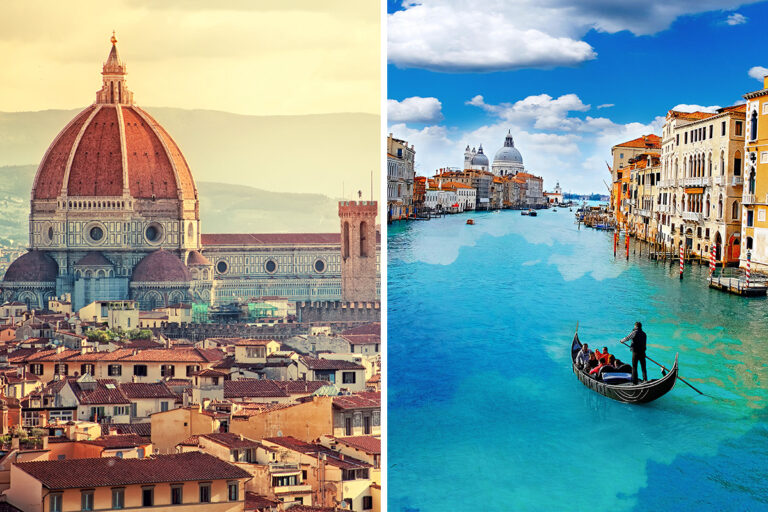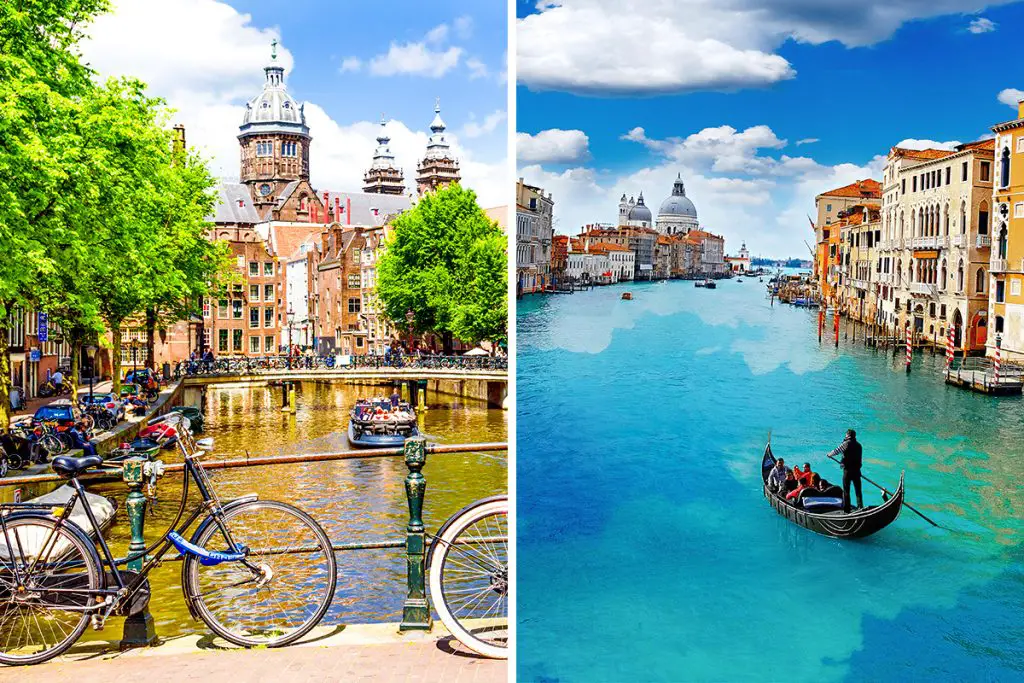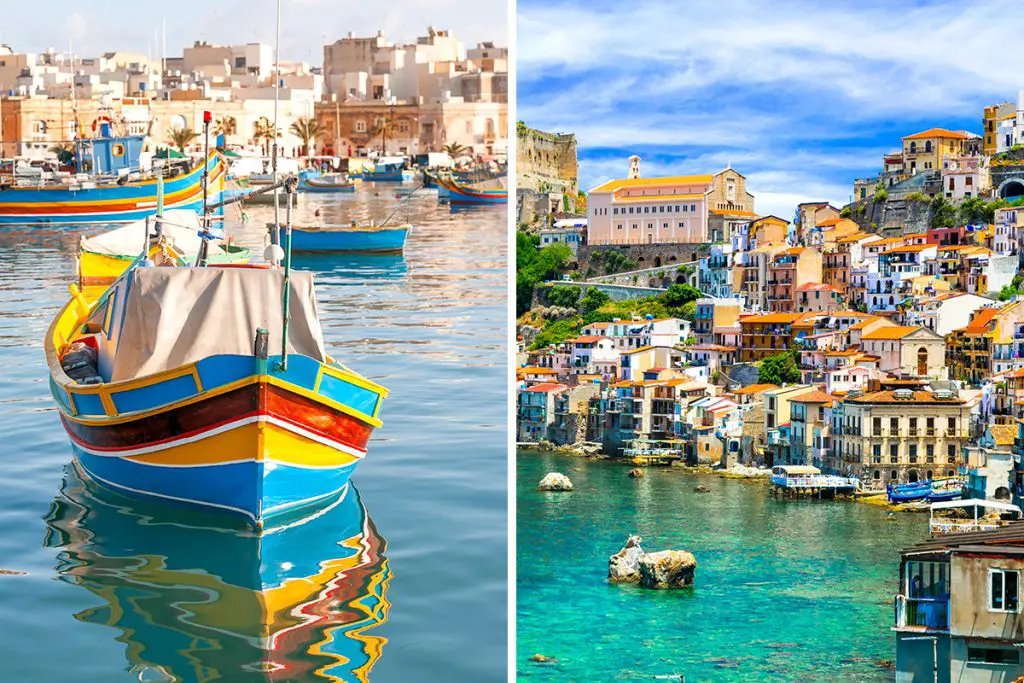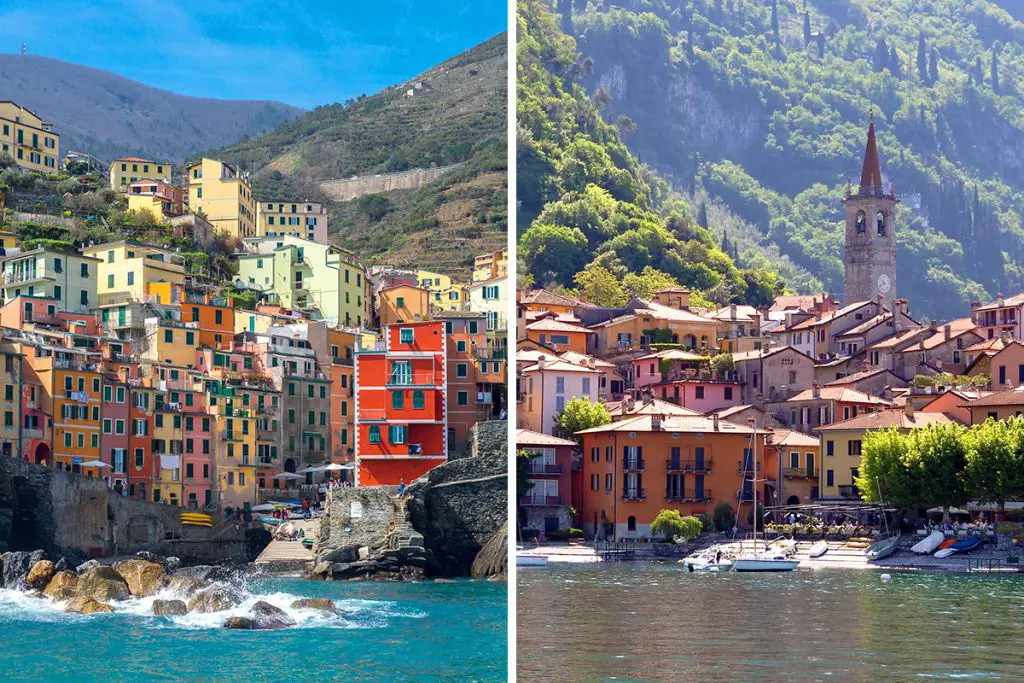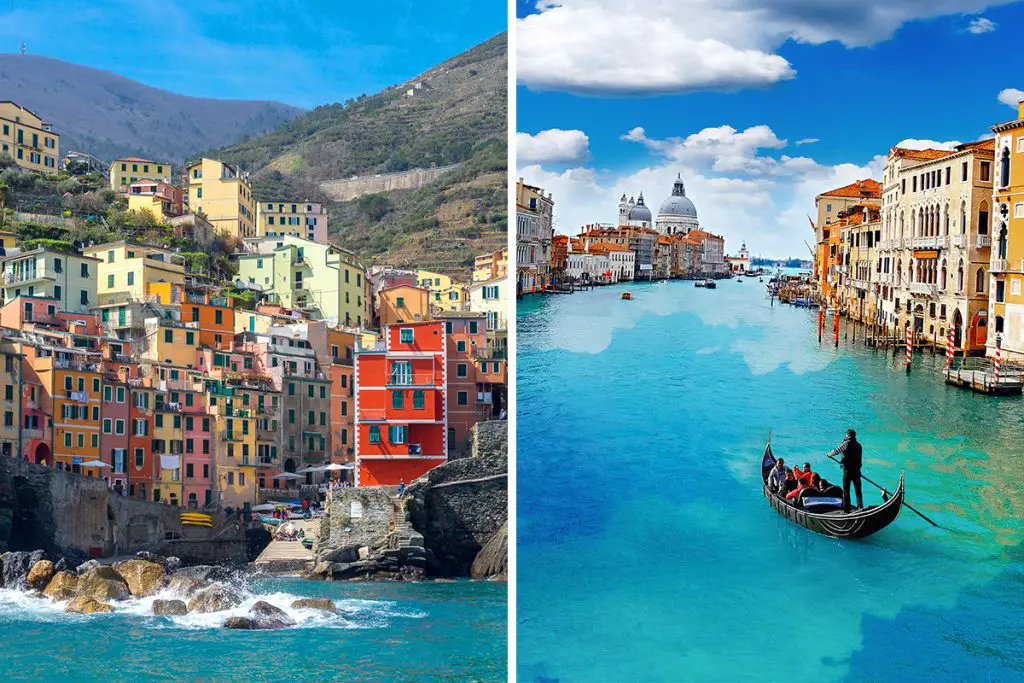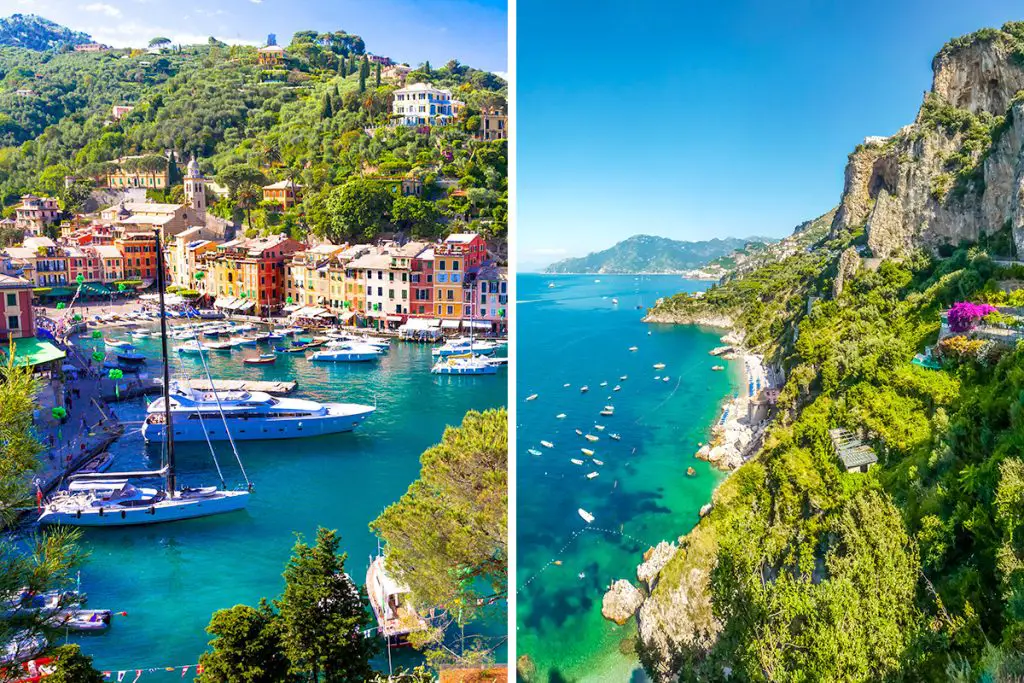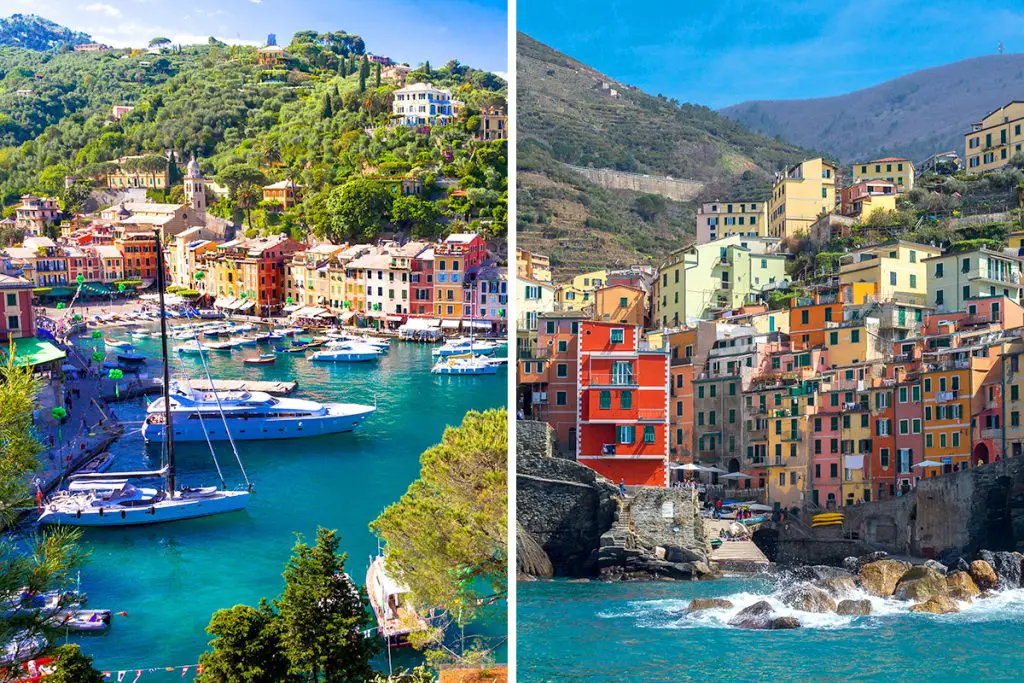Florence, the heart of Tuscany, is famous for many things. But one that stands among the rest is its importance in Italy’s art scene. Yet, this often overshadows many other aspects that make it such a well-rounded tourist city.
In the same vein, Venice often gets praise mainly for its glistening canals. But the city also has its fair share of rich history, a thriving art scene, and more.
And for you to pick which city to tick off of your Italian trifecta bucket list, you’ll need to get to know the two more. Luckily for you, below are some exciting reasons why you should pick Florence or Venice to host your Italian getaway.
Florence
A picturesque city filled with art and history, Florence is the pride of Tuscany. And while many tourists go here for its art, the quaint metropolis has tons of other allures to reel you in. From tasty food to glorious wine to hidden history in every corner, this Tuscan paradise is one that you should visit at least once in your life.
What Makes Florence Unique?
The Birthplace of the Renaissance
Being the cradle of the Renaissance, there’s no better place in the world to see masterpieces of this art style than Florence. Florence has countless of these. And some of them are so world-famous that you’ll recognize them even if you aren’t an avid art lover.
This isn’t surprising considering the big names behind Florence’s art scene. Behind the city’s medieval walls lie the artworks of the greatest painters of all time. This includes da Vinci, Michelangelo, Botticelli, and Giotto, among many others.
Because Florence is home to countless of the world’s most important artworks, it’s also called “the city of art”. And this reputation itself makes it a treasure trove for art and history buffs.
There’s a lot to see here, but don’t leave yet without seeing the most influential masterpieces in the city!
One of the most recognizable pieces in Florence is The Statue of David. It’s a stunning display of Michelangelo’s knowledge as a scientist and philosopher, with meaning in every detail. It also shows his mastery as an artist in sculpting the perfect human anatomy.
Even if you’re not an art lover, you’ve seen Sandro Botticelli’s Birth of Venus somewhere. It could be on mainstream media or in a textbook, but in Florence, you can see the real thing. His use of pastels and display of innocence in Venus almost puts you in a daze.
Titian’s Venus of Urbino is one of the city’s greatest masterpieces. It’s among his most sensual pieces, further enhanced by the softness of the layers of the paint. This is the piece that set the standard for reclining nude works, repeated by other famous artists in history.
Marvelous Architectural Masterpieces
A city brimming with history, Florence boasts a ton of historical landmarks at every turn. Unsurprisingly, it’s the Renaissance-style building that dominates its cityscape. But Florence also has some well-preserved buildings in the Medieval style.
Though the city has buildings of varying styles, Florence has four unifying elements in its architecture.
Colorful Marbles
Nearly all historical landmarks in Florence use marble, with hues of white, red, and green. The most famous example of this is the iconic Cathedral of Santa Maria del Fiore. Even Romanesque buildings have this, such as the Church of San Miniato al Monte and the Baptistry.
Frescoes
These are also integral to Florence’s architecture. Head to the Basilica di Santa Croce for some of the most influential pieces of Gothic Art. Basilica di San Lorenzo’s dome’s fresco is the iconic Glory of Florentine Saints and is a later masterpiece.
White and Blue or Gray Color Scheme
Countless buildings in the city sport a pale blue or gray and white color scheme. Great examples of this are the Basilica di Santo Spirito, New Sacristy, and the Basilica di San Lorenzo. This color scheme is also in the marble stoneworks of the Baptistry and the Church of San Minato al Monte.
If you’re already at the Cathedral of Santa Maria del Fiore, just head inside. You’ll find the same colors within its interiors.
Renaissance-Style Exteriors
This is the most obvious element in the city’s architectural scene. Many of Florence’s buildings weren’t made during the period of the Italian Renaissance. But these buildings still sport the distinct features of the style.
You’ll find that many of Florence’s buildings emphasize proportion, geometry, and symmetry.
Delectable Florentine Food
Italian food is one of the best-loved cuisines internationally. So when coming to any Italian city, eating a hearty meal is always one of the most exciting things you can do!
While you may know what Italian food is, there’s more variety in the country’s food scene. Cuisines vary from one region to another, and may even vary from city to city.
Each boasts its unique regional recipes, flavors, and ingredients. So if you’re in Florence, grab a dish you won’t find elsewhere in Italy!
Florentine cuisine is special in that its staples are gamey meat, such as rabbit and wild boar. They’re accompanied by tasty veggies, along with mushrooms and legumes.
For your antipasto (or appetizer), start with the popular Crostini Neri. It’s a toasted bread dish topped with liver paté that’s usually chicken.
Now if you want to eat like a local, grab a plate of pasta as your first course. One of the local favorites is Crespelle alla Fiorentina, an Italian version of a crepe. It’s stuffed with the yummy goodness of ricotta cheese and spinach, then topped with a velvety bechamel sauce.
For your main course, you have several delicious options. For a true taste of Florentine cuisine, order some Bistecca alla Fiorentina.
It’s a thickly-cut t-bone steak, grilled to perfection, always pink in the middle. It uses the meat of Chianina cows that graze on the lush Tuscany hills. So it’s a dish that you won’t find elsewhere!
End your gastronomic adventure on a good note and grab a bite of some Florentine sweets. No one’s stopping you from munching on some creamy gelato.
But you may want to try the popular Schiacciata Fiorentina. It’s a decadent cake covered with powdered sugar and topped with whipped cream or vanilla pudding!
World-Famous Wine
Florence is as much a city of wine as it is of Renaissance art. No surprise here, as it’s the capital of Tuscany, one of Italy’s most important wine regions.
You don’t have to leave the city to get a taste of the region’s greatest wines. They all make their way to the capital, and you can grab a glass in any of Florence’s many wine bars.
Two of the world-famous wines you must try are Brunello Di Montalcino and Vernaccia Di San Gimignano.
Brunello Di Montalcino is a deep red wine that packs a punch. The main flavors of this wine are cherry and rose. And while it’s a powerful drink, it’s not too fruity and boasts a delightful floral smell.
A bottle of Brunello costs around 200 USD if you get it in North America. But in Florence, you can have the bottle to yourself at 51 to 62 USD!
Meanwhile, Vernaccia Di San Gimignano is a strong grape wine. It has a distinct flavor that locals adore—a mix of flowers, honey, and saffron. Grown and produces in the Tuscany hills, it’s the quintessential drink of the region.
Florentine and Tuscan wines are more than these big names though. So if you’re the adventurous type, a wine-tasting tour is the tastiest way to understand the region.
This way, you can tour the scenic countryside, stroll through glorious vineyards, and sip some wine on the hills. This also allows you to tour centuries-old wineries in medieval villages.
Bustling Shopping Scene
The shopping districts of Florence may not be as elaborate as Rome’s or Milan’s. But the best thing about shopping in Florence is that it’s compact and everything is easily accessible on foot. Whether you’re out to splurge on luxury goods or for some quirky finds, Florence has it.
Spoil yourself with the most prestigious designer brands in Via dei Calzaiouli and Via Roma. It’s the home of the most coveted brands, such as Valentino, Fendi, and Armani. But there are tons more opulent boutiques here to keep the trendy fashionista busy.
Don’t get blinded by the glitz and glamor that Florence has to offer though. One of the best ways to get the ultimate cultural experience is to wander through the city’s maze of markets. There’s a dazzling array of offers here, from local produce to handcrafted jewelry to Murano glassware.
There’s no better place to shop on a budget than in the San Lorenzo market. This spot has an authentic, neighborhood vibe. Locals go here for their daily shopping and talk over some coffee after.
The stall-fringed streets here have everything you’d want. The indoor section is a two-level food market, filled with meats, fish, and specialty shops selling olive oils and cheese. While the outdoor section offers souvenirs, leather goods, pottery, and hardbound books.
You can buy a complete outfit with accessories for only 31 USD! Due to the competition among the vendors, you’re likely to get the price that you want. There are tons of 2-for-1 deals here, and you can get a bang for your buck as long as you bring your best bartering skills.
An Idyllic and Scenic City
Although Florence is the bustling capital of Tuscany, it’s still a small town at heart. Compared to other cities in Italy, Florence is a nice change of pace. The city has an easygoing feel to it and its slow pace allows you to soak in the beauty of the Tuscan views.
Right within the city are lush pockets of green spaces that make for an easy retreat away from the crowds.
You have the colorful garden of Giardino delle Rose, filled with hundreds of roses and lemon trees. There’s the whimsical Iris Garden, a tranquil spot filled with irises of all hues. And there’s the enchanting Bardini Garden, a sprawling medieval garden full of English woods.
Florence also has a river that separates the city into two parts, the Arno River. Walking along the sparkling waters of the river is an easy way to decompress at the end of your busy day.
You can float down the river on a long wooden oar for a romantic time. With a T-rafting tour, you’ll closer look into the river’s historic importance for the city’s commerce. And if you want a riverside aperitivo, the lake has tons of bars along the banks.
But if you’re more interested in the countryside views, Florence is a good starting place. It’s easy to take a Tuscan day trip here, where you can explore Siena, San Gimignano, and other renowned hill towns. Volterra has stunning rolling hills that extend far into the horizon for a lovely view.
Venice
Small yet incredibly enchanting, Venice is among the most picturesque cities in the world. Being so compact, it’s easy to explore Venice within a few days. But with a ton of remnants of its glorious past and cultural treasures, the city is bound to keep you busy on your trip.
What Makes Venice Unique?
The Magical Floating City
In place of streets, Venice has an intricate network of waterways throughout the city. This is the city’s most defining feature, earning Venice the nickname “the floating city”. And with the cloudy blue-green waters lined with pastel-hued buildings of all kinds, Venice is one of the world’s most beautiful cities.
Venice has around 150 canals, creating tiny islands in the cities connected by walkways and bridges. And among those, the Grand Canal is the city’s crowning glory. This is the city’s largest canal, famous for a few key reasons.
One is that it’s among the busiest waterways in Europe, with hundreds of people traveling up and down its waters. Another is that it’s lined by the most breathtaking buildings in Venice. Lastly, it’s the best place to watch the locals go about their daily lives, a glimpse of the true Venice.
While the Grand Canal is mesmerizing, you can go on a tour here for a memorable experience.
Tours with commentary are how you can gain a deep appreciation of the city’s history and culture. A gondola ride takes you through picturesque and historic spots along the canal.
You’ll make your way through some of the city’s important landmarks on this trip. This includes The Peggy Guggenheim Collection, Grimani Palace, and the Le Salute Church. Not only that, but you’ll also cruise along smaller and secluded canals for some hidden gems.
If you’re traveling as a group, you can have a private gondola that carries up to six passengers. A more budget-friendly option is a shared gondola ride where you can mingle with other tourists.
Spectacular Architecture at Every Corner
Venice is a treasure trove of magnificent buildings, boasting various types of styles. Among those, it’s the Venetian Gothic architecture that dominates the city. A unique design that you can only marvel at in the floating city.
Venetian Gothic is a product of diverse architectural influences. It uses the Gothic lanced arch with touches of Byzantine and Ottoman designs. This still was crucial for the city, as buildings had to stand above the canals.
A stroll or a boat ride around the city lets you appreciate the styles Venice has had throughout the centuries. And you have great examples for every design influence Venice has.
You can see the Byzantine influence in the central dome of the Basilica San Marco. This design features tall, skinny strictures topped with rounded arches. Not only that but also has a simple yet classic design with shiny textures, such as golden mosaics.
Venice has also seen some Islamic influence, most evident in the Ca’D’Ore Palace on the Grand Canal. It’s the first of the Gothic style, a highly ornate design that brings grace and opulence to a structure. And the most defining feature of the influence is the tall, pointed arches on the structure.
Ending the Gothic influence in the city are the Religious and Secular architecture. It sports minimal yet classic designs yet retained the pointed arches of the Islamic influence. The Santa Maria Gloria dei Frari is the best example of this, which is in the Campo dei Frari.
The Renaissance period revolutionized the Gothic influences in Venice’s architectural scene. It featured arched windows and had a strong emphasis on columns and geometry. But unlike the traditional Renaissance style, Venetian Gothic didn’t always follow balanced designs.
The best example of this style is Venice’s iconic Doge’s Palace. It’s one of the top tourist attractions in the city due to its impressive design. It’s a delightful blend of Renaissance, Morrish, and Gothic styles.
Countless Timeless Art
Venice is more than just its glistening canals or its colorful buildings. Take a close look at the city and you’ll find that the art here is delightful to explore.
Venice may not be the birthplace of the Renaissance or Italy’s art and history powerhouse. But its artistic side is undeniably impressive.
With almost a hundred museums in Venice, there’s no shortage of opportunities to see its art collection. It can be overwhelming to start an artistic escapade in a city that’s riddled with art on every corner. So here are the city’s most important artworks that you should never miss—
A painting that celebrates the city is Neptune Offering Gifts to Venice by Tiepolo. It depicts Venice as a beautiful queen, beside the lion of St. Mark, a symbol of the city. Neptune here offers Venice an overflowing gift of coins, pearls, and corals.
The Tempest by Giorgione is the star of the Gallerie dell’Accademia’s exhaustive collection of artworks. It’s the city’s most mysterious artwork, as you can’t understand what it’s trying to depict. Whatever it represents, it depends on whom you ask.
Venice is also home to a Titian artwork, the Pesaro Madonna. Titian strayed away from tradition here, as he didn’t place a devotional figure at the center of the painting. This decision created a stronger sense of movement in the painting, a sight to behold.
A World-Famous Film Set
Venice is home to the oldest film festival in the world, so it’s no stranger to stars. But on plenty of occasions, Venice played the star in some famous films too.
The city’s unique architecture and picturesque views make for a gorgeous backdrop. So not only does it attract millions of tourists each year, but also renowned filmmakers all over the world. With countless films shot here, you may not realize it, but you’ve seen Venice on the big screen.
And whether you want to feel like a movie star or just relive your favorite films, this is one of the most exciting draws of Venice.
One of the famous movies that used Venice as a film set is Casino Royale. James Bond graced several iconic spots in the city. Some of these are the Rialto Bridge, the Accademia Bridge, and the Campo San Barnaba.
Some big stars that shared the stage with Venice are Johnny Depp and Angelina Jolie in The Tourist. The film featured Palazzo Dandolo, Palazzo Pisani Moretta, and the Palazzo Querini Benzon.
But the entire film takes you on a journey throughout the city too. Some of its crucial shots include the Piazza San Marco and Peggy Guggenheim Collection. Even the interior of the Palazzo Loredan and Villa F had the spotlight.
A Fun City to Get Lost In
Being a maze of back alleys, it’s easy to get lost in the city of Venice. But most people don’t panic at the thought, instead, they embrace the idea. Getting lost in the city is seductive, as its hidden alleys and forgotten canals have an irresistible pull.
This may be an unusual allure of the city, but Venice is one breathtaking “wander” land. Venice is never uncrowded, even during its low season. But you can quickly escape the crowds by wandering down a deserted alley.
Setting foot on any of its abandoned streets often rewards you with the best views. And this also helps you capture the essence of the city.
The old buildings in the back alleys offer the perfect sites for artsy pictures. Whether it’s your subject or your backdrop, its rustic yet charming facade is Instagram-worthy. And since you’re you have the place to yourself, you can take all the time you need.
And while the photo ops are great, what is most exciting about getting lost in the city is stumbling upon hidden restaurants and cafes. Not only are they cheaper than those you find on the main streets. But they’re often better as they have more time to prepare your food without worrying about the long queue.
Venice’s hidden spots are the place to go for a change of pace. And they’re the best spots to soak in Venice’s charms at a much slower pace.
Venice or Florence – Which Is Better?
Although Venice is one of the most unique cities you could ever visit, it pales in comparison to Florence. Florence is a well-rounded destination that can keep you busy much longer. And in a head-to-head battle, there are tons of reasons to head to the art capital over the floating city.
To start off, Venice turns into a ghost town at night. Although you can find nightclubs and bars around Lido, the rest of the city feels abandoned when the sun goes down. Meanwhile, Florence has a ton of great nightclubs and wine bars, and its night scene is as vibrant as it can be.
When it comes to sightseeing, Venice takes the cake. Likely no other Italian city can rival its beauty. And other than the buildings, bridges, and monuments, Venice also has some scenic wonders in hidden alleys.
Venice isn’t a friendly city for the budget traveler though. It’s an expensive city to live and travel in, and the average daily cost in Venice is around 181 USD.
Florence is a more affordable city, with an average daily cost of 120 USD, so your money stretches a bit farther here. To top it off, Florence has a longer shoulder season, driving the costs down!
Lastly, Florence is not as crowded as Venice, even if it’s one of the most popular Italian cities. And while the city is small, you’re never going to feel suffocated in Florence.
This is a common issue tourists have with Venice. Venice may not feel as authentic as Florence too. And that’s because you’ll be in an overflowing stream of tourists.
FAQ
Florence vs. Venice Renaissance
Both cities have contributed to Renaissance art. But Florentine and Venetian art had different priorities.
Florentine artists focused on line and form, creating artworks that were tough and monumental. Florentine paintings also used more vivid colors in their paintings.
These paintings started out as drawings, as it was crucial in defining form. Drawings were also considered to be how Florentine artists work on their inner vision. Thus, these artists studied movement and anatomy in great detail.
Meanwhile, Venetian artists had color as their priority. They used an exhaustive process of layering and blending in their work. The goal was to achieve softness in their work and a glowing richness.
Venetian painters had their priority on understanding how light affects their composition. And they focused on how color describes their painting.
These painters didn’t start their work with drawings. Instead, they painted directly on the canvass, using layers of paint to define form rather than lines.
Is Venice in Florence?
Venice is a separate city, and you won’t find it in Florence. Venice is a part of northern Italy, in the Veneto region. While Florence is a part of the Tuscany region.
Is Florence Near Venice?
Florence is near the city of Venice, and they’re only around three hours apart. And if you’re riding a high-speed train, this journey will be over in a little over two hours. Because of this, visiting both cities on the same trip is an option many tourists take.
Florence to Venice Distance
The straight line distance between Florence and Venice is only around 126 miles (203 kilometers). But a more realistic estimate is its driving distance as it takes the road curvature into account. This is around 167 miles (269 kilometers).
Florence to Venice
It’s easy to travel from Florence to Venice as you have three transportation options. You can opt to take a bus, a plane, or a train on your journey. And if you’re looking for the best choice, here are some factors to consider.
The cheapest way to travel from Florence to Venice is by taking the bus. The average ticket price is 18 USD on average, but it can be as cheap as 10 USD if you book early. These are direct buses, so you don’t have to change rides along the way.
On average, the travel time on a bus is around 3 hours and 15 minutes. With 8 buses traveling this route per day, a bus is an easy way to travel.
The fastest way to travel from Florence to Venice is to fly. The travel time only takes around 2 hours and 13 minutes. But the downside is the high price tag, as a plane ticket on this route costs anywhere from 35 to 44 USD.
Florence to Venice by Train
A train ride from Florence to Venice is the best of both worlds, a speedy yet affordable option. Trains frequently travel this route too, as about 26 of them leave from Florence daily.
Taking the train from Florence to Venice covers a distance of 127 miles (204 kilometers). And the average travel time is only around 2 hours and 34 minutes. But the fastest direct trains can cut this down to 2 hours and 1 minute.
The first train departing from Florence to head to Venice leaves at around 2:03 AM. While the last train on this route leaves at 9:20 PM.
The average train ticket price on this route is 35 USD. And the cheapest, if you book ahead of time, is only around 20 USD.
Train From Venice Airport to Florence
Venice Airport doesn’t have a dedicated train station. So if you wish to travel by train from the airport to Florence, you need to go to the nearest train station. The Venice Mestre Railway Station and the Santa Lucia Railway Station are both nearby.
Thankfully, there are buses on the airport grounds. You can take a direct shuttle bus to any of these stations in around 20 minutes. From there, you can get a direct train and make your way to Florence!
Is There a High-Speed Train From Venice to Florence?
Several train companies offer high-speed trains between Venice and Florence. This includes Italo, Frecciarossa, and Frecciargento. These lines have an impressive travel time of only 1 hour and 57 minutes!
In total, 20 high-speed and direct trains run from Venice to Florence per day. The first train leaves Venezia Santa Lucia station at 5:37 AM. While the last one leaves at 11:09 PM.
Is the Train Ride From Venice to Florence Scenic?
The train ride from Venice to Florence gives you a glimpse of scenic spots along the way. You’ll go through beautiful towns along the way such as Prato, Ravenna, and Bologna. Also, you’ll get a view of some sprawling emerald landscapes, as well as the spectacular hills of the Tuscany region.
Venice to Florence Train Cost
The average train ticket price from Venice to Florence is around 23 USD. But if you book your tickets early, you may only get them for as low as 21 USD.
Cheapest Train From Venice to Florence
If you want the cheapest train tickets from Venice to Florence, choose a regional train instead of a high-speed one. You can get tickets for as low as 16 USD on this option.
How Far Is Venice From Florence by Train?
The train journey from Venice to Florence has a distance of around 126 miles (204 kilometers).
Florence to Venice Train Time
On average, taking a train from Florence to Venice takes around 2 hours and 34 minutes. But if you choose a high-speed train, you can reach Venice in only around 2 hours and 1 minute!
Venice to Florence by Car
To some tourists, renting a car on their journey from Venice to Florence is an enticing option. This allows you to explore the local area and make stops at scenic spots along the way.
You can rent a car in Venice and hit the road right away. The big downside of this option is that it can easily be the most expensive transportation on your trip.
Renting a car costs around 32 USD per day on average. The prices go up as your pick-up date approaches.
You also have to think of the gas expenses. This depends on the car size but a full tank can be anywhere from 78 to 103 USD.
Other than that, you also have to pay for tolls, parking, and other necessities along the way.
But if the costs don’t faze you, you have two routes to choose from on your trip. One is via A13, which has a distance of 171 miles (275 kilometers) and takes about 3 hours and 11 minutes. The other one is via A4/E70 which covers a distance of 224 miles (361 kilometers) and takes around 4 hours and 7 minutes of travel time.
Day Trip to Venice From Florence
If you’re staying in Venice, you can quickly go on a day trip to Florence. With trains to take you to Florence in only around two hours, you have a lot of time left to roam around!
There’s more than enough time to see what makes Florence such a popular Italian destination. Say hi to David at the Galleria dell’Accademia, take pictures by the Cathedral of Santa Maria del Fiore, and taste some Tuscan wine! And don’t leave Florence without taking home a souvenir from the San Lorenzo Market.
Day Trip From Florence to Venice by Train
Taking a day trip from Florence to Venice is a popular option that you shouldn’t miss. Hop on a high-speed train, arrive at the floating city within two hours, and soak in its beauty! You’ll have an exciting several hours in the majestic city of Venice.
Take a gondola ride on the Grand Canal, get lost in the city’s alleyways, visit some popular film locations, and more! An exotic attraction in Venice is glassblowing, and you can find these artisans in Murano.
Best Way to Get From Florence to Venice
The best way to travel from Florence to Venice is to take the train. Trains offer both speed and comfort, yet it also has a reasonable cost.
You can get to Venice in as little as 2 hours and 1 minute on the fastest trains. And on average, the tickets will only set you back 22 USD. With 26 trains a day traveling this route, you won’t worry about missing the train!

